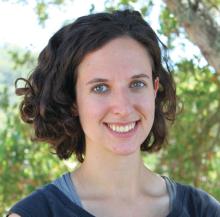I cared for my first patient with leukemia my first month as a doctor. Actually, he would protest that characterization. Marty didn’t have leukemia anymore. After chemotherapy and a bone marrow transplant, he was a few years out with no evidence of disease. While his hematologist was hesitant to use the word “cured” until more time had passed, he had been in a lasting remission.
I don’t remember exactly what I expected the day we met in July 2015, but I think it was some version of a happy, grateful person. I read his chart. I knew what he had been through. Marty had endured multiple serious infections, underwent biopsies and surgeries, and overall spent many months of his early 20s in the hospital. Then, after his transplant, he developed graft-versus-host disease that affected his skin, his gut, and his vision. But now – according to the chart at least – he was doing well.
Except that was the chart version of Marty’s story, not his own. He was diagnosed as a college sophomore, left school for treatment, and then never went back. He was pulled from his friends and his life.
“I never thought I would be the guy living in my parents’ basement,” he told me. “No job. No friends. No girlfriend.”
And, the graft-versus-host disease was still affecting him. His skin chronically itched. The light bothered his eyes, so he couldn’t drive long distances. Insecure about his skin and his vision, he self-imposed limitations on his activities, which in turn limited his hobbies.
In medical literature, what Marty was going through is chalked up to issues in survivorship. Many patients experience some version of this story. And it’s often not the hematologist or oncologist, but primary care physicians, who are responsible for managing this challenging aftermath.
Primary care physicians are responsible for a lot. After a certain duration of remission, I’ve noticed we tell some of our hematology and oncology patients, “Congratulations! You’ve graduated our clinic. We are happy to see you back if you’d like. But really, your primary care physician can manage your health now.”
Over my 3 years as a resident, I was Marty’s primary care physician and I got to know him well. I attribute a great deal to him. It was Marty who showed me, early in my career, what happens after leukemia. I frequently see related issues in my patients now, and I credit Marty with teaching me what they are going through and how best to intervene.
In addition to depression, there was anxiety, understandably centered on the tenuousness of his health. I remember how Marty would send urgent emails and call the office after each blood test. If anything came back abnormal, there came a slew of questions. The meaning behind them was clear: The questions were filled with a fear that it could be the leukemia coming back.
What he didn’t know was that I was scared, too. After all, I was an internal medicine resident, not a hematologist. Was I checking the right labs? Was I taking his concerns seriously enough? Behind the scenes, I checked myself by running things by his bone marrow transplant doctor on a regular basis. She guided me on guiding him.
I often thought that I couldn’t imagine what he was feeling. We were the same age, but our day-to-day concerns took a drastically different tone. We both took a deep interest in his blood work, but while I felt angst over taking responsibility for them, he worried about whether they signaled an impending death.
“If the leukemia does come back,” he told me one day, “I don’t think I want to treat it. I can’t deal with all that again.”
There were many times he wanted to give up, he told me, and it was only for his parents that he pushed through. But now, he said, if it came back and the odds of curing it were that much smaller, he couldn’t do it for his parents again. He would take his savings, travel the world, and not look back.
I listened. I felt I understood his values at that point. I could not disagree.
Looking back, I realize some of my best help to Marty was through paperwork. It wasn’t glamorous, but it was what Marty needed. The passport to putting his life back together included many notes from a doctor: One to get him back into school, another to live in a dorm room, another for accommodations for his vision during exams, another to participate in sports.
At the time, I still was in newfound awe of the power of my signature; suddenly, signing MD at the end of documents persuaded schools, employers, and others to provide necessary services for my patients. I couldn’t think of a better use of my signature than to help Marty get his life back.
At the end of my residency, when I broke the news that I wouldn’t be a primary care physician anymore, I tried to soften it by sharing that I would be staying at Stanford for a fellowship in hematology and oncology. I’d be around. When I casually suggested he could come by anytime to say hello, he said no, and I then realized my blunder. He didn’t want to see me in a cancer center. He had done his time there. That was not the place he wanted to be a patient, ever again.
This month Marty turned 30, and so did I. He occasionally sends me updates from school, which I always enjoy receiving. He is on a sports team; he is pursuing a degree in economics; he has friends. And, he remains in remission. It took a long time, but he is happy.
During our last visit together, Marty gave me a stuffed animal with the name of the college I had helped him go back to. It’s sitting on my bookshelf. It reminds me how to be there for patients during the aftermath, a time that can be easily overlooked as the hardest. It reminds me what matters.
Minor details of this story have been changed to protect privacy.



